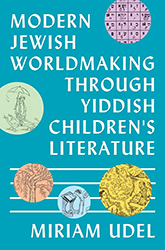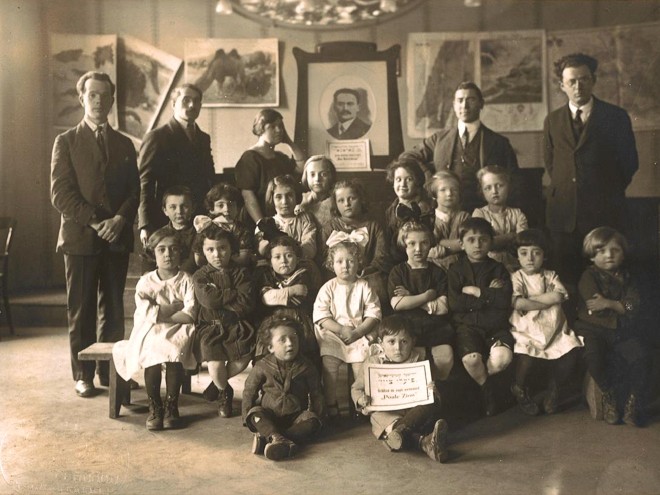Kadya Molodowsky (1894−1975) was one of the most eminent Yiddish language poets of her generation. Now Batia Kolton, an innovative Israeli artist, has illustrated Molodowsky’s lyric story about poverty and thrift, tinged with poignant humor. Drawing on the tradition of classic comic strips from the early twentieth century, Kolton interprets Ilana Kurshan’s translation of the poem into a dark, witty picture of Jewish life in pre-World War II Eastern Europe, focusing on the uses and misuses of a humble coat. A range of children interact with the garment, some hapless victims as they are unfairly held to account for simply outgrowing it. Eventually, one non-conforming child refuses to be punished for his family’s precarious situation, transforming the tattered coat into an image of defiance.
Readers will be reminded of the Yiddish folk song, “I Had a Little Overcoat,” the subject of two classic picture books: Joseph Had a Little Overcoat by Simms Taback and My Grandfather’s Coat by Jim Aylesworth. Both of those works celebrate the reassuring message that nothing, no matter how old or worn out, becomes useless, since the reuse and remembrance of the original object becomes part of a family’s traditions. The Life of a Coat is a more subversive tale, in which the damaged and ill-fitting coat is forced onto each member of the family by parents who are completely obtuse about its unsuitability. In spite of the fact that the father is a tailor, the coat which he sews “with narrow slit/For a child’s head to fit,” goes first to Shmulik, who, in Kolton’s picture, is a heavyset boy who seems entrapped when he wears it, although the text claims that he “wore the coat with pride.” Only after he is literally bursting out of the coat do his parents admit that it no longer fits him, and each subsequent child is burdened by the unrealistic expectation that the coat will last forever.
Young readers will enjoy the exaggerated expressions on the parents’ faces as they observe the coat falling apart as each of its owners grows older and bigger. The family’s white goat, a frequent image in Jewish folklore, appears in many blocks of picture and text, seeming almost human in his confusion about the coat’s disintegration. Adults will note the frightening effect of parents who are unable to recognize their children’s needs. Their poverty and oppression, or perhaps just simple foolishness, seem to have blinded them to the point where religious faith meets impracticality: “And while awaiting the Messiah/Let us pass it on to Haya.” They alternate between insisting that the coat is as good as new and becoming angry at the evidence that it cannot last forever. One rebellious child finally decides to challenge his parents’ irrational behavior, conveying a message about the power of the truth. More sensitive readers may be frightened by some images of physical punishment and nasty pranks. Adults will appreciate the book’s clever combination of comic book caricature and shtetl culture as a vehicle to puncture sentimentality and applaud those who challenge norms.
The Life of a Coat is highly recommended both for children and for adults who are interested in Yiddish literature.
Emily Schneider writes about literature, feminism, and culture for Tablet, The Forward, The Horn Book, and other publications, and writes about children’s books on her blog. She has a Ph.D. in Romance Languages and Literatures.





